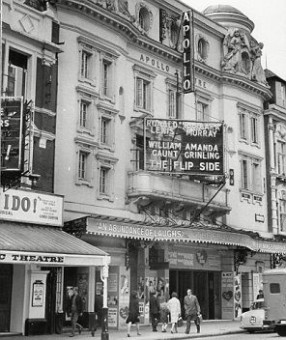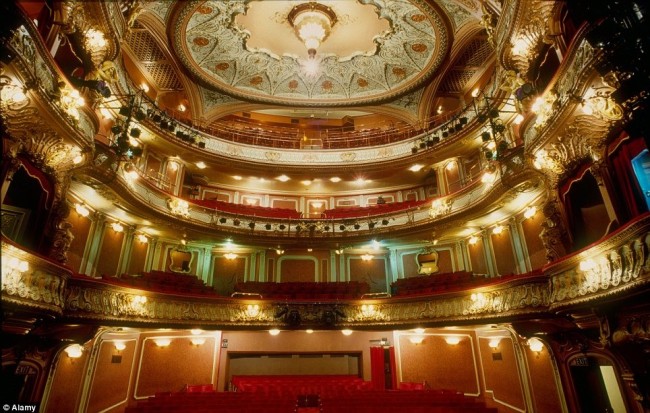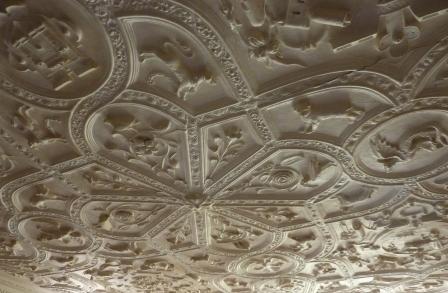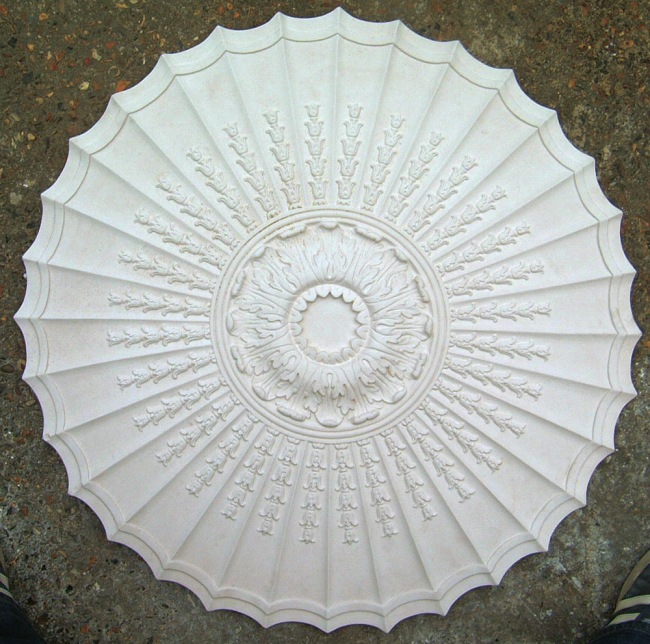…over three months after the collapse of the theatre ceiling plasterwork
The Apollo theatre is one of the oldest and most beautiful London theatres. The construction, built by Lewin Sharp for owner Henry Lowenfeld, is a grade 2 listed West End theatre visited by hundreds of cultural lovers each night.
Apollo Theatre
In mid-December its spectators, fans, curators, partners and owners became victims of a terrible accident during which the ceiling of the 112 year old building collapsed on the audience, 40 minutes into the show. Many were hurt and hospitalised as a consequence, others were devastated to see the theatre in such a condition.
The accident was a result of a number of unfortunate events: possible distraction and disregard, ageing materials combined with bad, wet weather. Although the theatre ceiling was checked in September 2013 (ref. BBC News), the collapse in December (three months later) suggests that there is also an issue with the current health and safety protocol. Metro newspaper stated: ”The owners of the West End’s theatres have been told to begin urgent ceiling inspections after it emerged that weakened supports were the ‘principal cause’ of the collapse at the #Apollo”
An interview conducted by the telegraph with the co-owner of Nimax Theatres Nica Burns admitted that it is difficult to maintain the group of six London theatres (Apollo, Duchess, Garrick, Lyric, Palace and Vaudeville) and that she was aware of the fact that the buildings were ‘damp’ and neglected by previous owners.‘Water attacks the building from above and below,’ she said. ‘Half the theatres have tributaries of the Fleet River running through the basements, and we have to pump them continuously, 24 hours a day. You can never stop looking after these old buildings.’
The Theatres Trust, which is responsible for promoting the health of historic theatres, said it was ‘very concerned’ by the incident.
Apollo Theatre owner ‘could face £1m legal claim over ceiling collapse’ (ref. Standard)
Perhaps, this is a call to action to all London theatre curators and old building owners to check the conditions of their constructions and their plasterwork elements.
Decorative plasterwork, as beautiful and resistant it can be, needs conservation and maintenance.
Theatre: The three-galleried auditorium, which seats 796, is decorated with elaborate plasterwork and the balcony on its third tier is considered the steepest in London
Gideon from Fine Art Plasterwork commented on the tragic event, saying: ‘’As a plasterwork company with over 30 years of experience in decorative plasterwork we have seen many historic buildings being neglected and destroyed by natural causes. It is sad to see how the cultural heritage of this beautiful city suffers from the lack of funds or poor management’’.
The average lifetime of a ceiling plasterwork varies depending on its maintenance and weather conditions. Robin Townley of the Association of British Theatre Technicians said that “The handbook goes on to recommend a new certificate should be obtained every 12 months’’. A spokesman for Westminster City Council, which covers the West End, said it requires venues to have their ceilings checked every three years rather than every 12 months (ref. BBC News).
In conclusion, such a horrific accident in the middle of a West End show is extremely rare case, from which there is a lesson to be learned. The fact that the Apollo theatre ceiling was checked only three months prior the accident suggests that the safety protocol needs updating as the building ages and the weather conditions can cause unpredictable consequences. We would agree with Robin Townley and suggest that old building owners should seek assistance from professional plaster companies for the maintenance of their plasterwork. Best practices would include consulting industry professionals for the art maintenance of such buildings. Especially in weather conditions like the present, the safety should not be compromised by any means.




